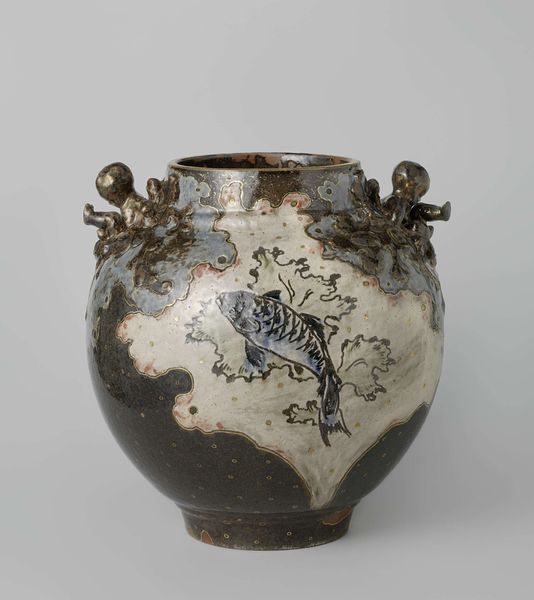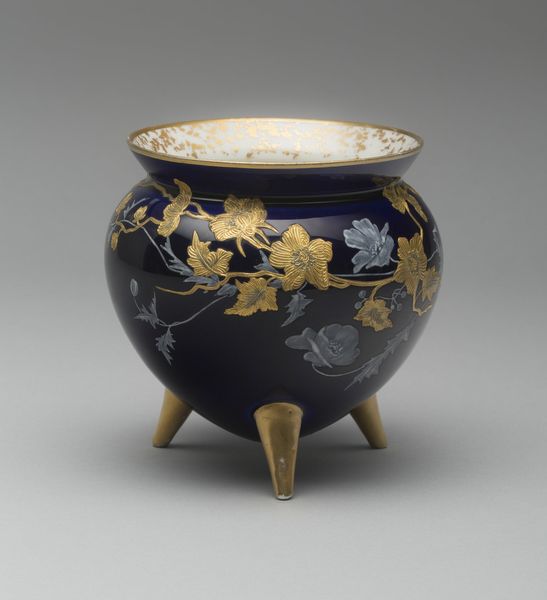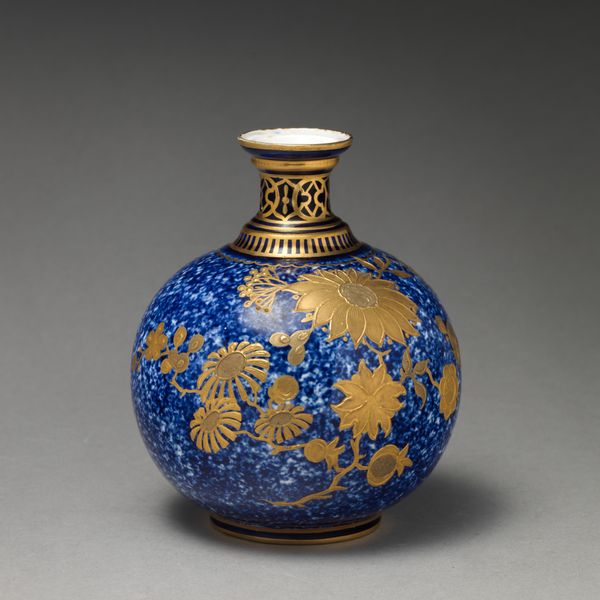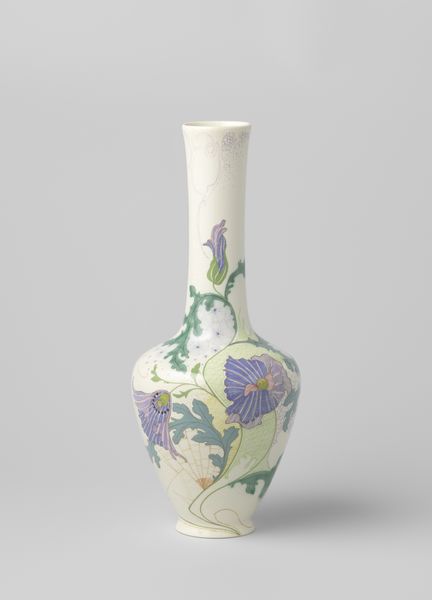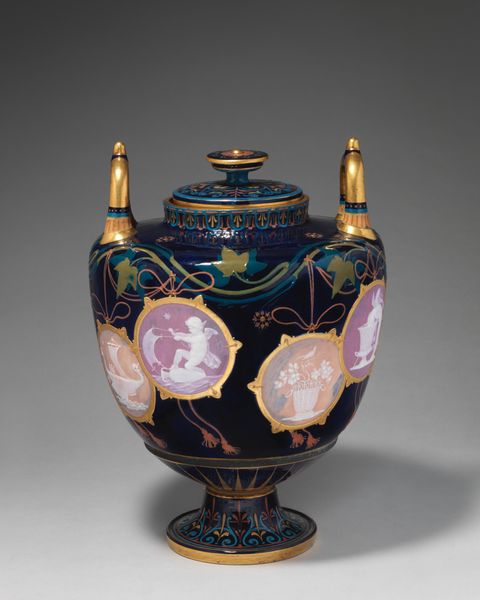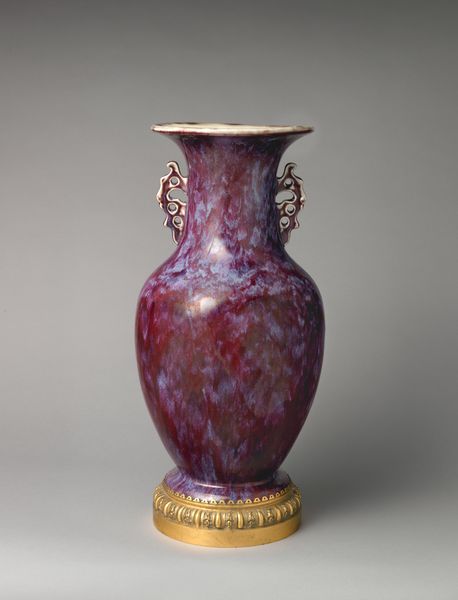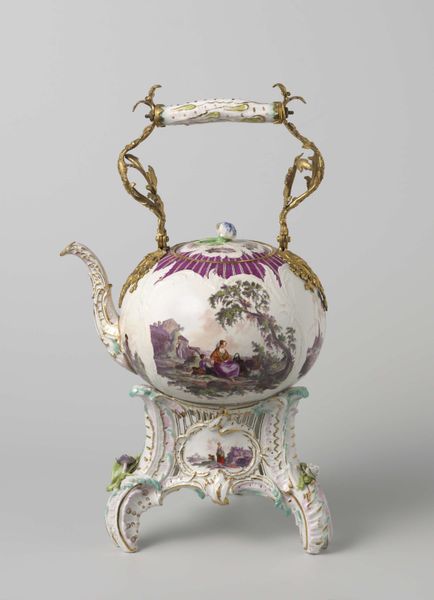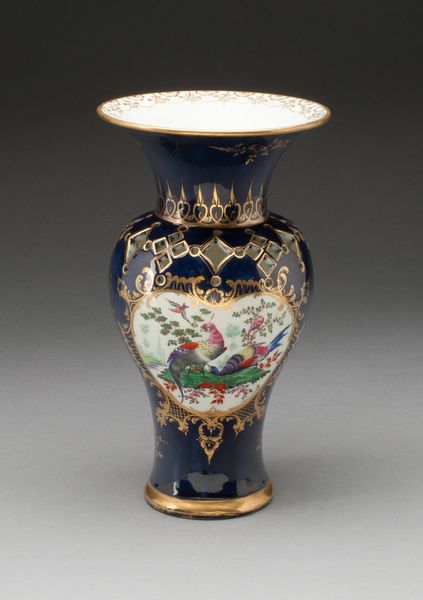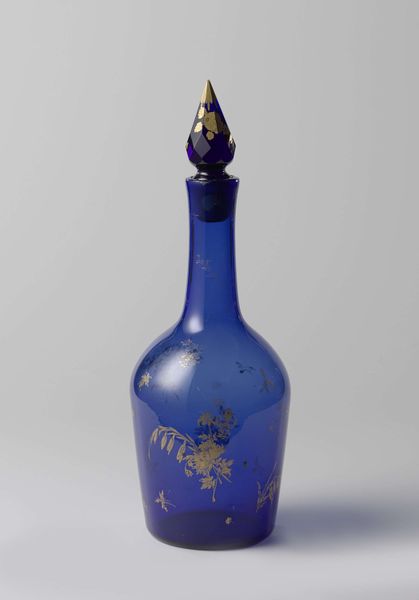
ceramic
#
asian-art
#
ceramic
#
stoneware
#
orientalism
#
ceramic
#
decorative-art
Dimensions: height 61.0 cm, diameter 25.4 cm, diameter 40.0 cm, diameter 28.6 cm, weight 7.3 kg
Copyright: Rijks Museum: Open Domain
Editor: Take a look at this striking pair of vases, circa 1900, probably stoneware with ceramic details. They feel both delicate and monumental. What strikes me is the deep indigo glaze and those graceful cranes. What do you see in this piece? Curator: Beyond its obvious beauty, I see a reflection of the intense cross-cultural dialogue happening at the turn of the century. These vases, undeniably influenced by Asian aesthetics, tell a story of Orientalism. Editor: Orientalism? So not purely an expression of Asian art? Curator: Exactly. Consider who likely commissioned or purchased these. European and American elites were fascinated by the “Orient,” which was often romanticized and exoticized. This wasn’t necessarily an accurate reflection of Asian cultures, but rather a Western interpretation, produced and consumed within unequal power dynamics. Note how the “Asian-ness” of these vases, crafted within a colonial gaze, reinforced certain stereotypes. Editor: So the vases become more about the Western perception of Asian aesthetics than necessarily reflecting the artists intent? Curator: In many ways, yes. The deep indigo, the cranes – these all speak to established visual codes associated with Asia, repackaged for a Western audience. This makes them powerful artifacts for understanding the historical relationship between East and West. They operated in galleries and homes. Editor: It's amazing how much is embedded in these objects! I'll definitely see these vases with different eyes now. Thanks! Curator: Indeed, thinking about these works, it’s important to reflect on who tells whose story and how, even with beautiful objects.
Comments
rijksmuseum about 2 years ago
⋮
These two vases are decorated with naturalistically represented cranes and pine trees on a deep-blue ground. Both pine trees and cranes symbolise long life. The detailed rendering and sophisticated colour nuances illustrate the technical progress undergone by the cloisonné enamel process since the opening of Japan in 1854. Like Tokyo and Nagoya, Yokohama was a centre for the export of cloisonné enamel wares.
Join the conversation
Join millions of artists and users on Artera today and experience the ultimate creative platform.

